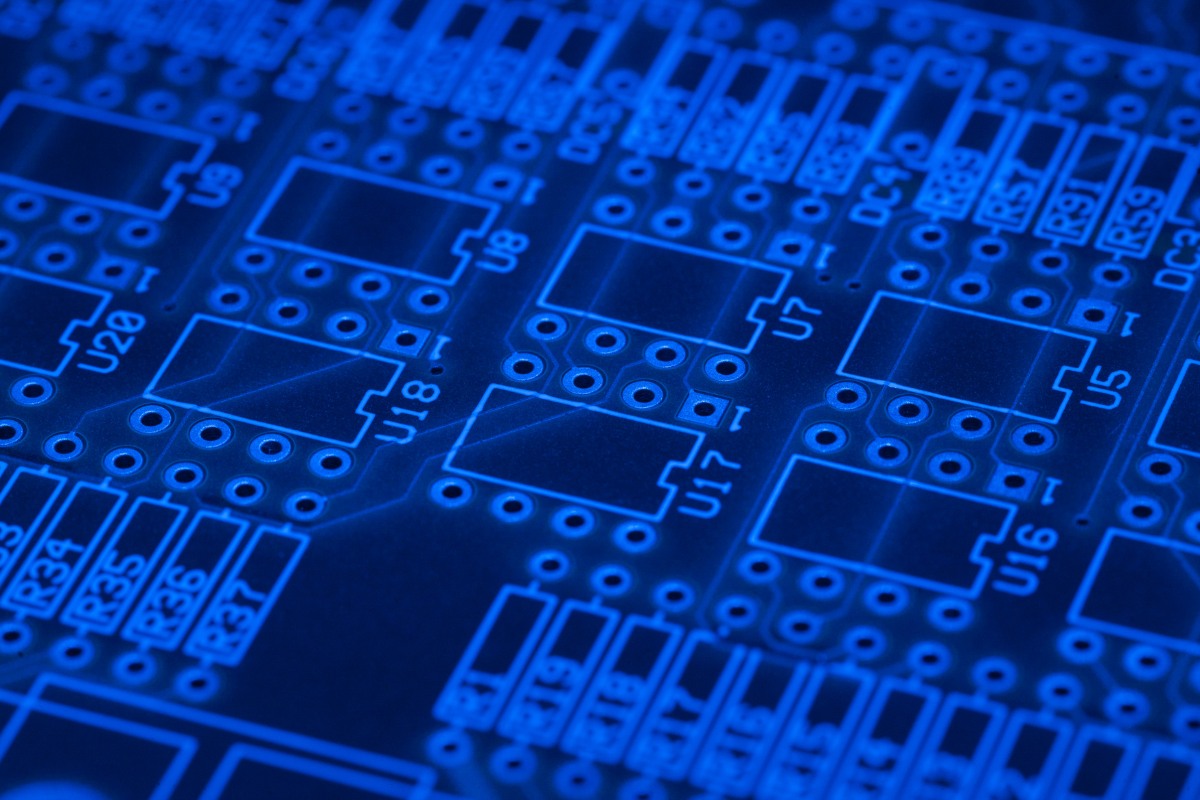PCB 포토플로팅은 컴퓨터 제어하에 광원을 사용하여 매체(일반적으로 고대비 단색(흑백) 사진)에 잠재된 이미지를 드러내는 전기 기계 광학 프로세스입니다. 노출 단계가 완료되면 현상액을 사용하여 포토 프로세서에서 매체를 처리하고 고정, 세척 및 건조 과정을 거칩니다.
PCB 포토플로팅의 응용
상상할 수 있는 거의 모든 이미지를 형성할 수 있습니다. PCB 포토플로터는 주로 PCB(인쇄 회로 기판) 및 IC 패키징 생산에 사용됩니다. 다른 응용 분야로는 화학 밀링 및 특수 그래픽 아트 등이 있습니다. 포토플로팅은 인쇄 회로 기판용 포토리소그래피 마스크를 만드는 첫 번째 단계입니다. PCB 업계에서는 이러한 마스크를 PCB 포토플롯이라고 하며 일반적으로 20µm 이상의 피처로 제한됩니다. 집적 회로는 마이크로미터 이하의 피처 크기를 가진 포토마스크를 사용하여 비슷한 방식으로 만들어지며, 포토마스크는 전통적으로 포토플로터 출력을 광환원하여 생산됩니다.
역사적 배경
최초의 포토플로터는 1960년대에 거버 사이언티픽(현재 유캠코)에서 출시했습니다. 초기 기계는 크세논 고강도 방전(HID) 플래시 램프를 사용했으며 회전하는 조리개 휠에 이미지를 필름이나 유리판의 감광성 표면에 장착해야 했습니다. 이미징 헤드 어셈블리는 매체를 건드리지 않고 매체의 표면을 가로질러 드로우와 플래시를 생성했습니다. 드로우는 이미징 헤드가 감광성 표면 위로 이동하면서 연속 조명에 의해 생성되는 벡터 또는 호입니다. 플래시는 고정된 위치에서 적절한 모양의 조리개를 통해 빛을 비추어 하나의 단순한 그래픽을 만듭니다.
최신 포토플로팅 기술
래스터 스캔 장비
최신 포토플로터는 일반적으로 하나 이상의 스팟에 초점을 맞춘 레이저 빔을 사용하고 멀티 메가헤르츠 속도로 변조하여 이미지를 형성하는 래스터 스캔 기계입니다. 초기에는 녹색 아르곤 이온 레이저와 청색 헬륨-카드뮴 레이저가 자주 사용되었습니다. 현재 모델은 적색 헬륨-네온 레이저, 적색 레이저 다이오드 또는 적색 LED(발광 다이오드)를 사용합니다.
포토플로터와 이미지세터
포토플로터는 이미지세터와 밀접한 관련이 있습니다. 포토플로터는 이미지 생성에 사용되는 컨트롤러 유형과 이미지의 해상도 및 절대 정확도 면에서 이미지셋팅과 다르며, 포토플로터는 이미지셋터보다 훨씬 더 엄격한 사양을 충족합니다.
레이저 직접 이미징(LDI)
포토플로팅과 관련된 가장 최근의 개발은 고출력 레이저 또는 제논 램프를 사용하여 사진 필름을 노출하는 대신 코팅된 기판에 포토레지스트를 직접 노출하는 LDI(레이저 직접 이미징)입니다. 따라서 사진 필름을 취급할 필요가 없습니다. LDI 장비는 현재 50만 달러대의 가격으로 판매되고 있습니다.
입력 형식
포토플로터의 입력은 일반적으로 거버 파일 형식의 벡터 그래픽 파일입니다. 일부 포토플로터는 TIFF와 같은 비트맵 형식도 허용합니다.
결론
PCB 포토플로팅은 1960년대에 처음 시작된 이래로 크게 발전해 왔습니다. 초기 제논 HID 플래시 램프 사용부터 레이저 직접 이미징의 최신 채택에 이르기까지, 이 기술은 계속해서 발전하여 더 높은 정밀도와 효율성을 제공합니다. 업계가 발전함에 따라 포토플로팅의 응용 분야와 기능은 더욱 확대되어 인쇄 회로 기판 및 기타 전문 그래픽 아트 생산에서 그 역할을 더욱 공고히 할 것으로 보입니다.
